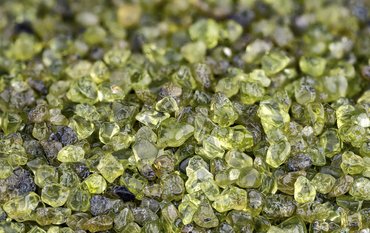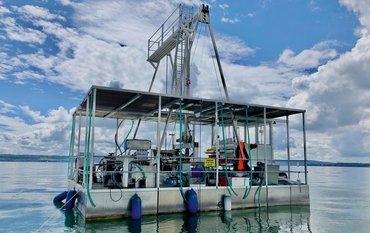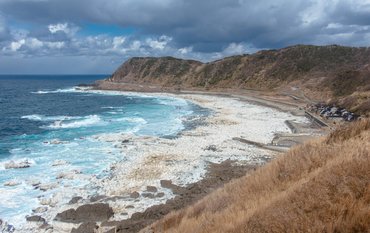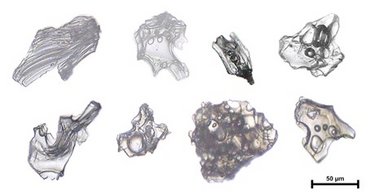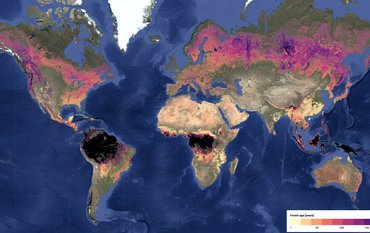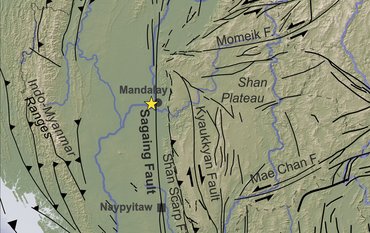Summary
When, where and with what intensity are auroras likely to occur? An international research team led by Dr Huiting Feng, Dr Dedong Wang and Prof. Yuri Shprits from the GFZ Helmholtz Centre for Geosciences has developed a model for real-time aurora prediction that can calculate potential aurora ovals up to three days in advance. The study was published in the Journal of Geophysical Research: Machine Learning and Computation. A corresponding application is available on the GFZ's Space Weather Website.
Background: Auroras
Auroras, also known as northern/southern lights or polar lights, are among the most breathtaking natural spectacles. In recent months, they have been visible repeatedly in our latitudes, far away from the polar regions. This is caused by strong solar storms, which are currently occurring more frequently in the eleven-year cycle of solar activity. The glowing veils of green, red and purple light appear in the sky when high-energy particles ejected from the sun into space enter the Earth's atmosphere in a complex interaction with the Earth's magnetic field, where they excite oxygen or nitrogen molecules to emit light. The auroras occur mainly in oval regions around the geomagnetic poles, known as auroral ovals. The position and size of the auroral ovals are influenced by geomagnetic activity, the variation in the Earth's protective magnetic field.
Observing auroras is not only a magical experience. It also demonstrates the strong connection between the Sun and our planet, which goes beyond heat and light: auroras are also an excellent indicator for monitoring and predicting “space weather effects”, i.e. the effects of particle streams and electromagnetic fields in near-Earth space. They can disturb satellites, disrupt navigation and communication systems, and even affect power grids on the ground.
Predicting the Polar Lights
Researchers at the GFZ Helmholtz Centre for Geosciences have developed a model to predict auroral activity. The model applies machine learning methods and combines two important metrics: Firstly, the Kp index, a standard measure of global geomagnetic activity that was originally proposed and is now also predicted by the GFZ. Secondly, satellite observations from DMSP SSUSI (Special Sensor Ultraviolet Spectrographic Imager), which captures ultraviolet images of aurora from space. This approach enables more accurate forecasts of the auroral oval’s location and intensity.
A real-time version of the aurora forecast is available on GFZ’s Space Weather Website. The results of this work have been published in the Journal of Geophysical Research: Machine Learning and Computation.
The first author of the paper is Dr Huiting Feng. The research was carried out during her one-year stay at GFZ in 2023 as a visiting PhD student under the supervision of Prof. Yuri Shprits and Dr Dedong Wang. She returned on 1 June 2025 to begin her postdoctoral work with Shprits and Wang in GFZ’s Section 1.5 “Space Physics and Space Weather”. This is supported with an Alexander von Humboldt Research Fellowship for Postdoctoral Researchers, hosted by Prof. Yuri Shprits.
The corresponding author of the study is Dr Dedong Wang, who is researching waves in the inner magnetosphere and their effects on electrons in the radiation belt around the Earth as part of his ERC Consolidator Grant project WIRE from the European Research Council (ERC).
Fun fact about Alexander von Humboldt and auroras:
Alexander von Humboldt was the person who coined the name “geomagnetic storms” in an early paper. During his studies on the systematic measurement of geomagnetic forces, he observed an aurora and its influence on a magnetic needle in Berlin shortly before Christmas in 1806," reports Dedong Wang.
Sources for this Humboldt information:
Federhofer, Marie-Theres: „Magnetische Ungewitter“ und „Erd-Lichter“: Alexander von Humboldt und das Nordlicht, Zeitschrift für Germanistik, Number 2 / 2014, pp. 267-281(15), DOI: https://doi.org/10.3726/92142_267
Die vollständigste aller bisherigen Beobachtungen über den Einfluß des Nordlichts auf die Magnetnadel; angestellt von Herrn Alexander von Humboldt zu Berlin am 20sten Dec. 1806. In: Annalen der Physik 29 (1808), S. 425–429, Zitat S. 427.
Original study aurora model:
Huiting Feng, Dedong Wang, Yuri Y. Shprits, et.al., A Kp-Driven Machine Learning Model Predicting the Ultraviolet Emission Auroral Oval, - Journal of Geophysical Research – Machine Learning and Computation, 2, 2, DOI: 10.1029/2024JH000543.
https://doi.org/10.1029/2024JH000543
Further informationen about Space Weather at GFZ:
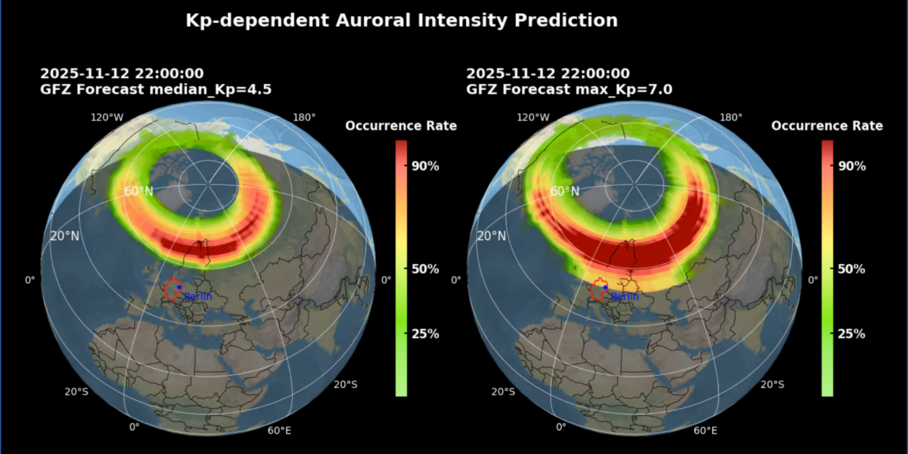
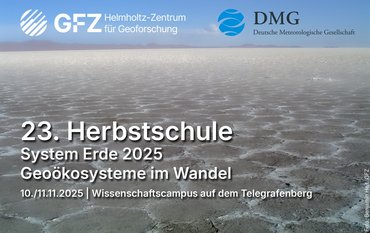
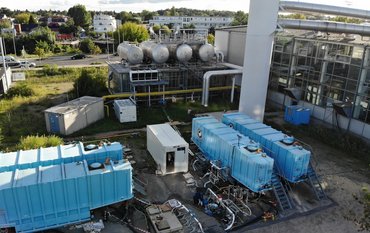
![[Translate to English:] Group photo with 8 people in a seminar room in front of a screen.](/fileadmin/_processed_/2/1/csm_20251114_News_EU-Water-Resilience-Exchange_Kreibich_c-xx_db4e5be690.jpeg)

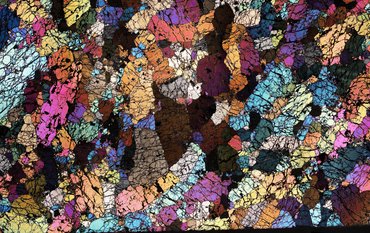
![[Translate to English:] Portrait photo, blurry background](/fileadmin/_processed_/a/2/csm_2025_11_06_JEAN_BRAUN_HE_Helmholtz_Portraits-23_2b5c35beee.jpeg)
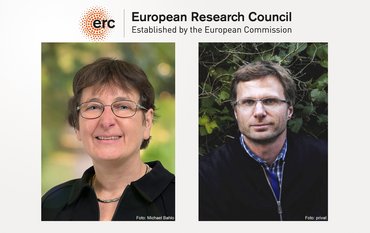
![[Translate to English:] Excerpt from a map of the Phlegraean Fields near Naples, Italy: Left: Red dots mark smartphone sensors, yellow triangles mark fixed seismological stations. Right: The area is coloured in shades of yellow, red and purple according to the amplification of seismic waves.](/fileadmin/_processed_/3/b/csm_20251028_PM_Smartphone-Earthquake_Slider_12500fa0e6.jpeg)

![[Translate to English:] Green background, portrait of Heidi Kreibich](/fileadmin/_processed_/1/1/csm_20251023_Kreibich-Heidi-2025-Vollformat-green_web_-c-Michael-Bahlo_72946c7fe4.jpeg)

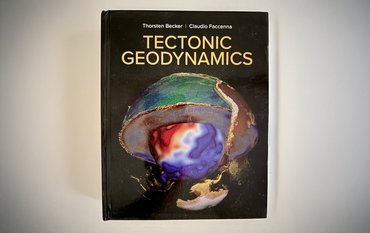
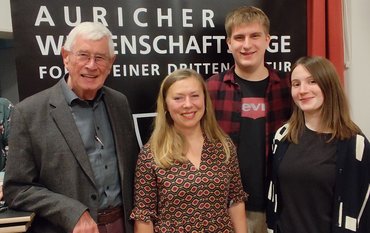
![[Translate to English:] semicircle depicting the future missions, graphics of the new satellites](/fileadmin/_processed_/3/d/csm_2025_10_08_Copernicus_Erweiterung_3f08a76a33.png)
![[Translate to English:] Portrait picture](/fileadmin/_processed_/f/4/csm_Magnall-Joseph-Kachel-c-privat_36e23315c3.jpeg)





